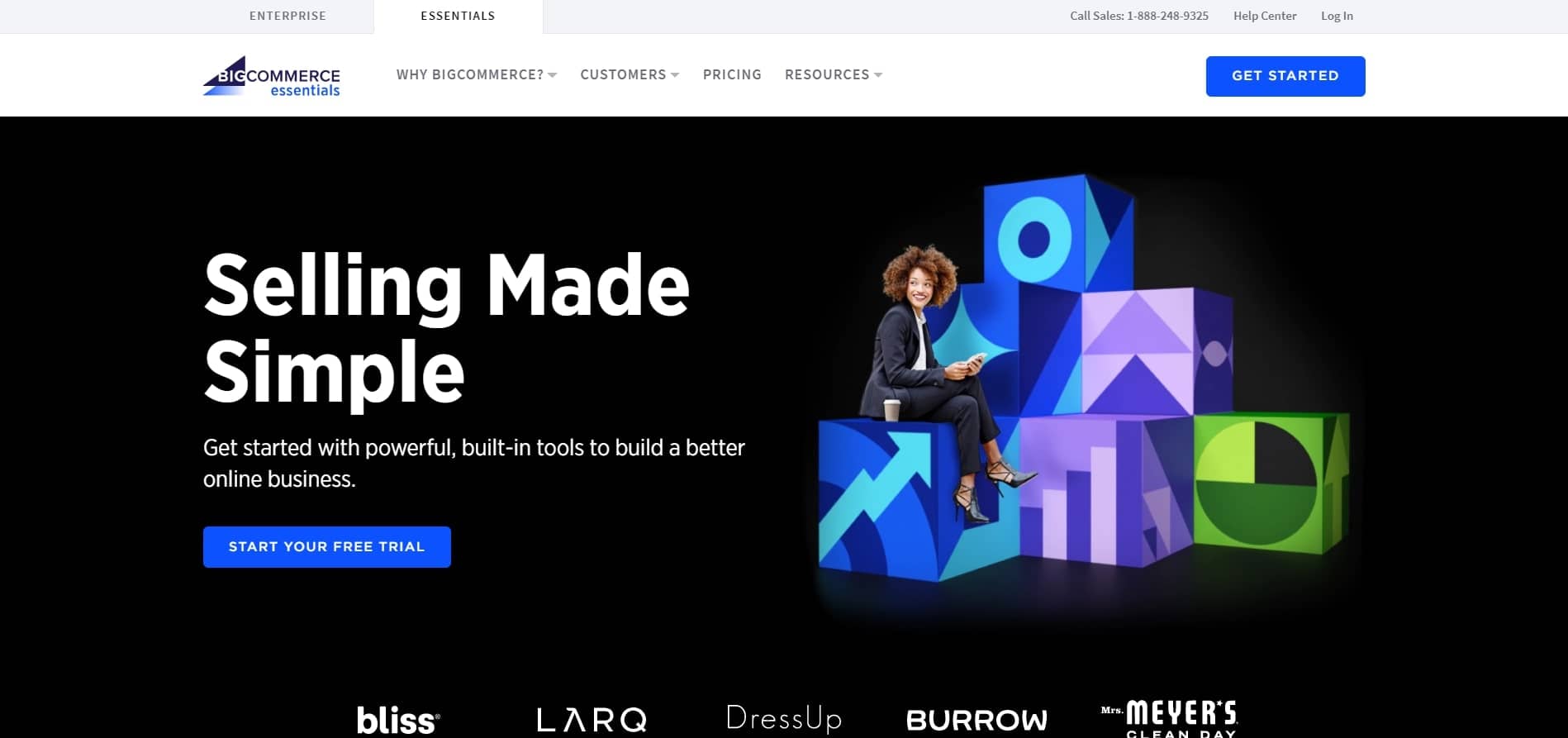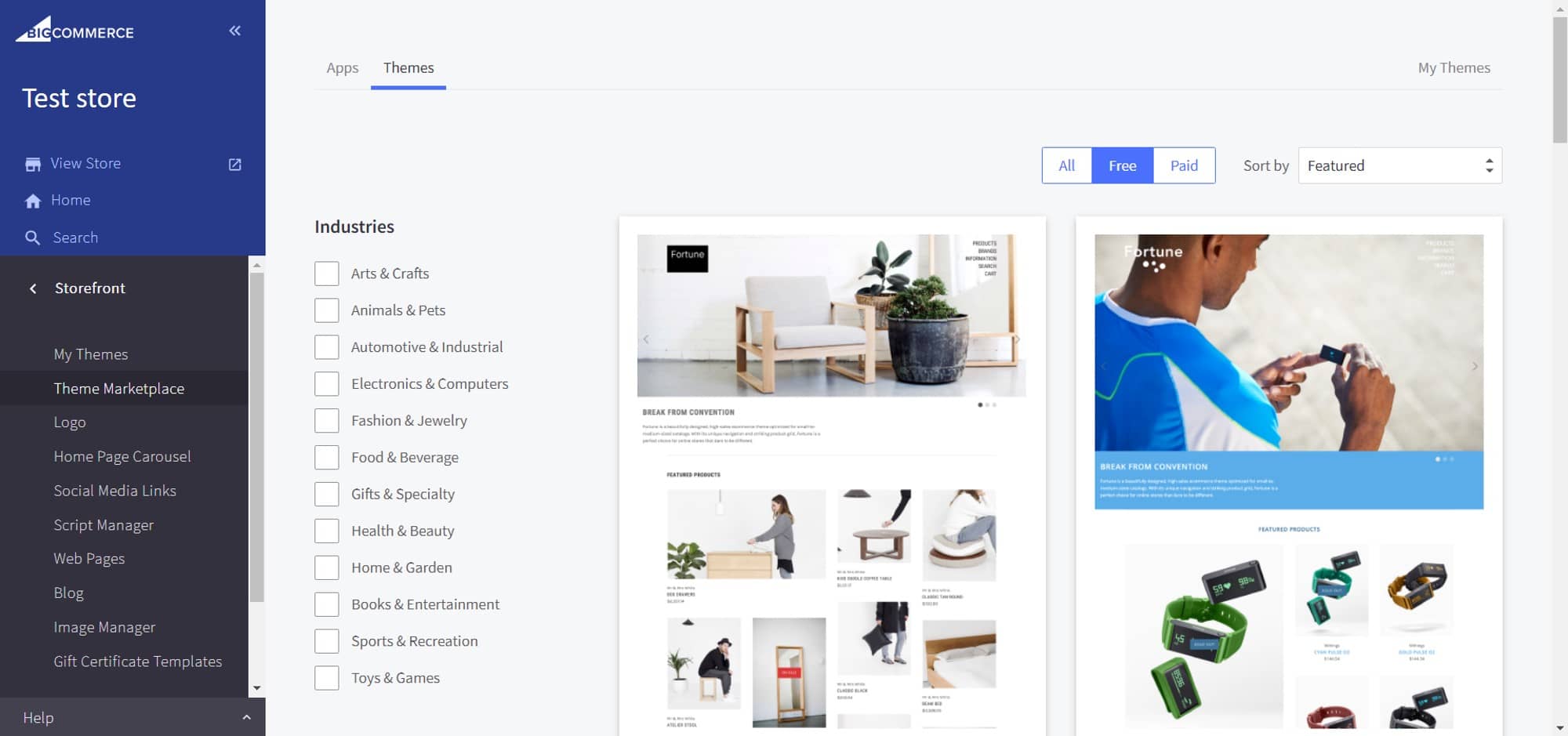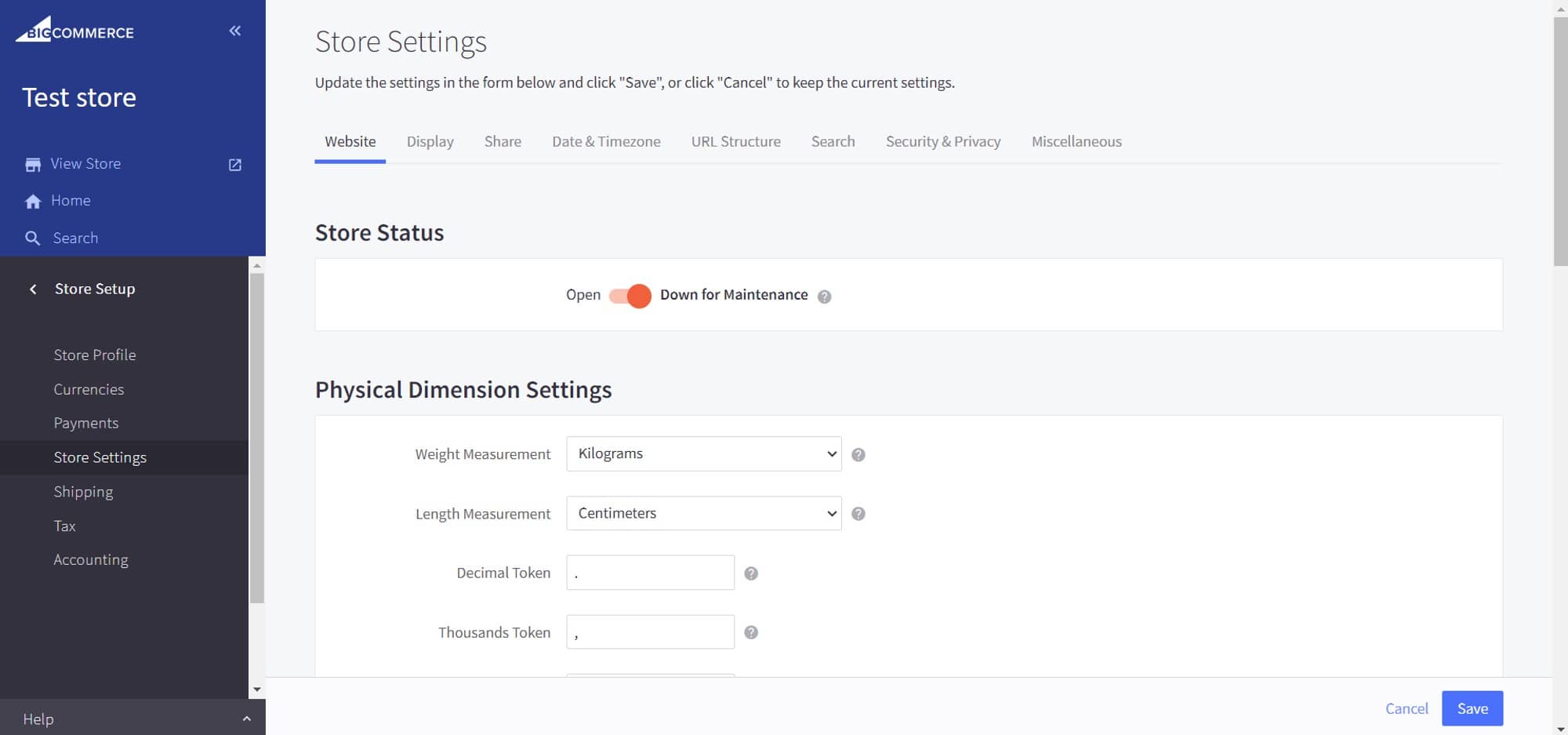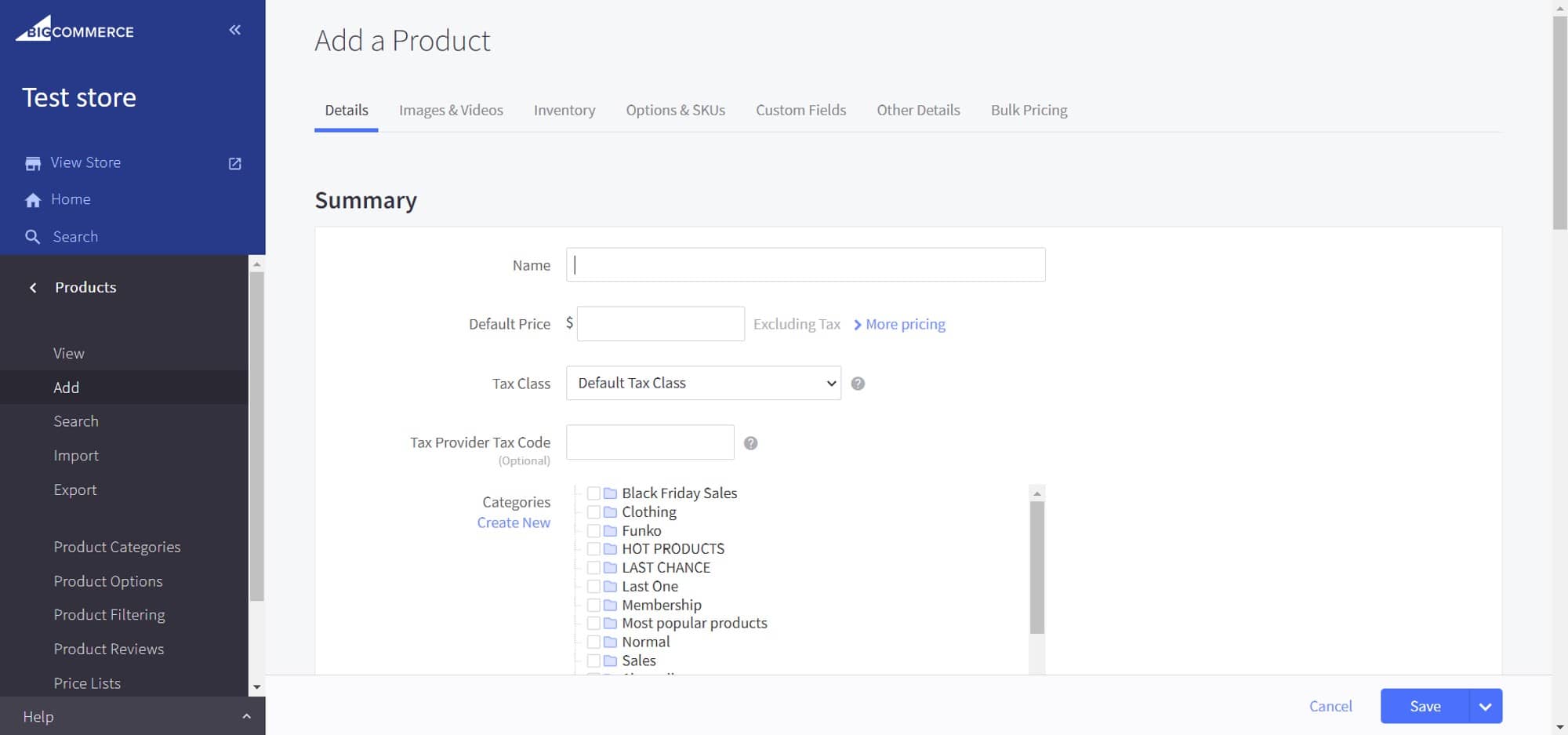Bigcommerce is a SaaS product that charges a monthly fee for its eCommerce hosting software. It comes with customizable website templates, a robust design tool, and easy-to-understand inventory management, allowing you to sell digital or physical goods. Anyone can set up a BigCommerce site, but not everyone can do it effectively and know how to optimize their website for conversions.
Here’s our easy-to-understand breakdown of what you need to do to get started on BigCommerce: Tutorial for Complete eCommerce Beginners!
Beginner’s Steps to Set up A BigCommerce Store
Signup
Visit BigCommerce.com and create an account by clicking “Start your free trial.” As of April 2023, BigCommerce offers a 15-day free trial and an optional demo session for new users of the platform. Choose your free trial first, then enter the details required (you can use anonymous names and personas to test the site), click “Create your store,” and wait for the system to create your first BigCommerce store!

Important to note, BigCommerce doesn’t ask for your credit card in the beginning. So, if you encounter any credit card forms requiring you to fill them out, avoid them! Beginners are most likely to fall for fishing scams, so take notice of the domain you are signing up on and verify that it is the official BigCommerce site.
Choose a theme
BigCommerce offers an official theme marketplace, with both paid and free themes. All feature comprehensive modifications. Premium themes are slicker in design and have more modification options. You can opt for any theme, ensuring a great-looking site.

Further reading: Best Themes For BigCommerce Stores.
For beginners, the best BigCommerce theme to choose is Default. This theme allows you, the freshman to eCommerce, to use BigCommerce’s intuitive drag-and-drop editor. Furthermore, this theme is frequently updated and supported by BigCommerce, so you won’t have to worry about transitioning to another page anytime soon.
Understanding Layout and Navigation
Welcome to BigCommerce’s store owner interface. BigCommerce has a history of changing its interface in drastic ways. But their information layout remains the same: A left-hand menu for quick navigation to Orders, Inventory, Apps, and Settings; and a left-hand navigation screen. You will find basic settings in the “Store setup” sections, such as contact information, shipping, payment, currency, tax, and accounting.

Creating Pages
Beginners will want to create these pages first to increase eCommerce trust. You can find pages under Storefront/Web pages on the sidebar.
- About Us – This page will tell people about you, so keep it sweet and short.
- Shipping & delivery information – You can write similar information as other sites.
- Contact us – Provide clear contact information and link different channels where customers can reach you.
- Policies – Terms of service, privacy policy, return policy and backorder policy will help make your site more trustworthy.

Adding Products
You can’t make money if you don’t have anything to sell. Go to the Products tab on the left-hand side menu. Here, you’ll find 5 actions you can do with Products on BigCommerce: View, Add, Search, Import, and Export. Click “Add Product” and add any relevant information on your product. Ensure the product has an attractive image and clear description. Beginners should read up on our Bigcommerce Tutorial to SEO and research their competitors’ products at this stage. Include details to inform customers of your items.

Setup payment & shipment
The payment gateway allows taking payments from the website. Choose the payment gateway suitable to you. Calculate the payment and shipment rates and define them on the page. Ensure you do not lose sales.
Pay the app marketplace a visit
Our BigCommerce Tutorial for Beginners only covers the standard features. Luckily, if you can’t find a BigCommerce feature readily available in this blog or on your test store, there is a high chance you can find a suitable app in the marketplace. The platform provides various apps, such as order management, inventory management, backorder, marketing, sales, or even automation.
Most of them have a free trial or free plan, so you can test to your heart’s content during the first 2 weeks of BigCommerce.
One of the essential integrated apps if you’re looking to enhance your business productivity: Atom8 and BackOrder. You can discover them here:
 Atom8 helps you automate repetitive tasks to save hours of working.
Atom8 helps you automate repetitive tasks to save hours of working.
 With BackOrder, zero inventory is no longer be a problem.
With BackOrder, zero inventory is no longer be a problem.
Test and go live
When your trial ends or you are ready to go live, you will need to choose a plan. Research costs associated with a BigCommerce store carefully to choose the right package for your business.








